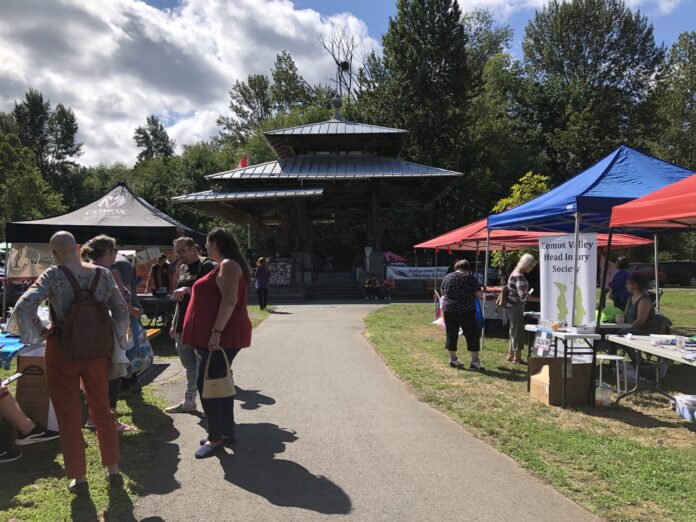Comox Valley community members gathered at Simms Park to mark International Toxic Drug Awareness to day to spread awareness and decrease stigma.
According to local initiatives, it is an “incredibly important” day and moment for them to show that supports are available for those who are struggling.
“This is kind of an opportunity for us to let people in the community know that this is a resource for people,” said Holding Hope facilitator Jane Sterk.
“What we’re finding is that people that come to this group find it’s a really safe space to tell their story and get different ideas from other people about how they might cope with different aspects of supporting someone.”
The day follows the latest report from the BC Coroners Service for the month of July, which said 198 people in the province died due to toxic drugs including 31 on Vancouver Island. The province adds it is the 13th consecutive month where the death toll has been above 190.
“It’s a terrible situation,” added Sterk. “We’ve created a hostile environment for people who need services not stigma.”
Dr. Eva Hemmerich and peer support worker Callum Roth with the Comox Valley Addictions Clinic echo the comments made by Sterk, adding it is heartwarming to know there are others wanting to find a solution to the toxic drug crisis.
“It’s sometimes so hard for us even in a little city for us to make connections and to communicate and to learn what other resources the city has,” said Roth.
“When we get together as a group, we can help educate one another and educate more people and that’s really going to be a big part of the solution moving forward.”
Hemmerich adds the problem is very complex and will take time and multiple angles from multiple parties and communities and the province move forward.
“It takes and village and a team and support from all levels of government and community to make significant changes,” said Hemmerich. “We need more big changes. We need supportive housing, we need treatment programs, we need a variety of safe supply.”
She adds that Regulated Access to Drugs are also needed to continue treatment and have options for people who are in need to help.
“It’s a start. We’re taking a lot of baby steps in the right direction, and it just takes time to move so many different things in the same direction, but we are doing it,” added Roth.






